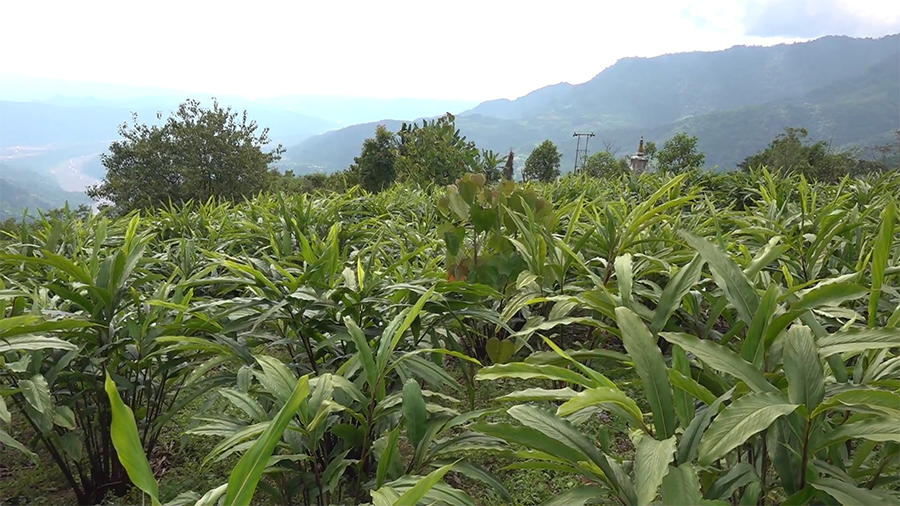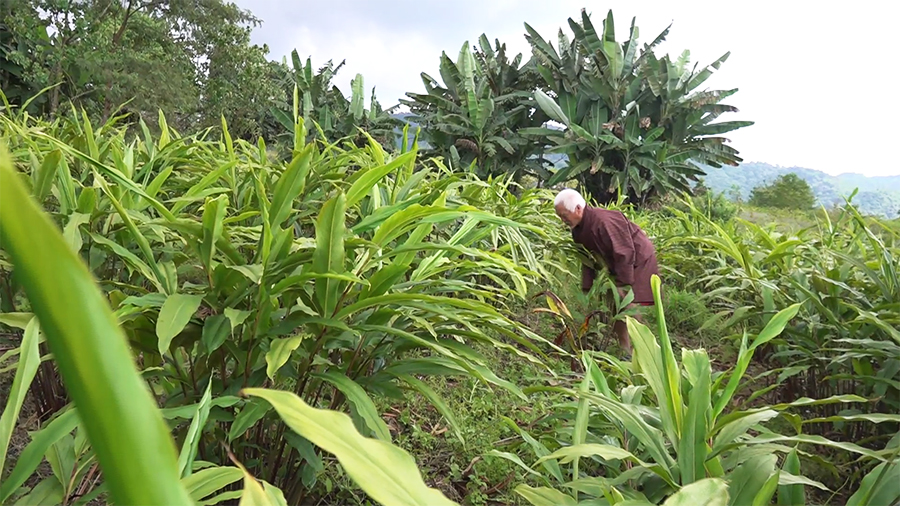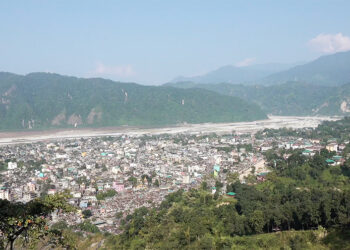
Cardamom has become a key source of income for farmers of Samdrup Jongkhar’s Tshotshalu village. Farmers can sell cardamom for as high as 1,700 ngultrum per kilogramme this year, a significant increase compared to last year’s price of around 500 ngultrum. The price rise is providing a boost to farmer’s livelihoods.
75-year-old Ngawang Gyetshen has cultivated cardamom on more than an acre of his land. With the price of cardamom soaring above Nu 1000, Ngawang is clearing bushes and weeds around his cardamom plants, determined to maximise his harvest.
 Villagers of Tshotshalu in Martsala Gewog started cultivating cardamom about five years ago, and with the rise in prices, it has become a profitable crop.
Villagers of Tshotshalu in Martsala Gewog started cultivating cardamom about five years ago, and with the rise in prices, it has become a profitable crop.
Ngawang Gyeltshen said, “Compared to other crops, cardamom is profitable. I produced about 80 kilogrammes of cardamom this year and earned around 150,000 ngultrum. I am expecting to earn even more next year.”
Cardamom is the only cash crop here. While my production was low this year, I am hopeful for better yield and income next year,” said Nima Chenzom, a villager.
Sonam Zangpo, also a villager said, “Cultivating cardamom is easier than other crops. Though production was less this year, I earned around Nu 200,000.”
However, farmers say cardamom plants are dying during the winter months due to lack of rainfall. They say that the available drinking water is insufficient for irrigation.
Sonam Zangpo has invested around Nu 300,000 to connect a water supply to his cardamom field.
He said, “I bought water pipes from Pemathang and connected the system myself. Cardamom needs water and manure to thrive.”
Meanwhile, the Martshala Gewog Administration has no plans to construct an irrigation channel for cardamom cultivation. The office assures that the existing drinking water supply will be maintained.
Martshala Gup Yenten Dorji said, “We don’t have a budget to construct irrigation channels. If the fields are near houses, we can supply water through pipes. But since most of the cardamom fields are in the forest, it requires significant resources.”
In Samdrup Jongkhar, cardamom is harvested between October and December.
According to the Integrated Agriculture and Livestock Census of Bhutan 2023, the district produced 26 metric tons of cardamom.
Villagers sell their cardamom to traders across the border as well as to the Food Corporation of Bhutan Limited.
Kinley Wangchuk, Samdrup Jongkhar
Edited by Sangay Chezom









